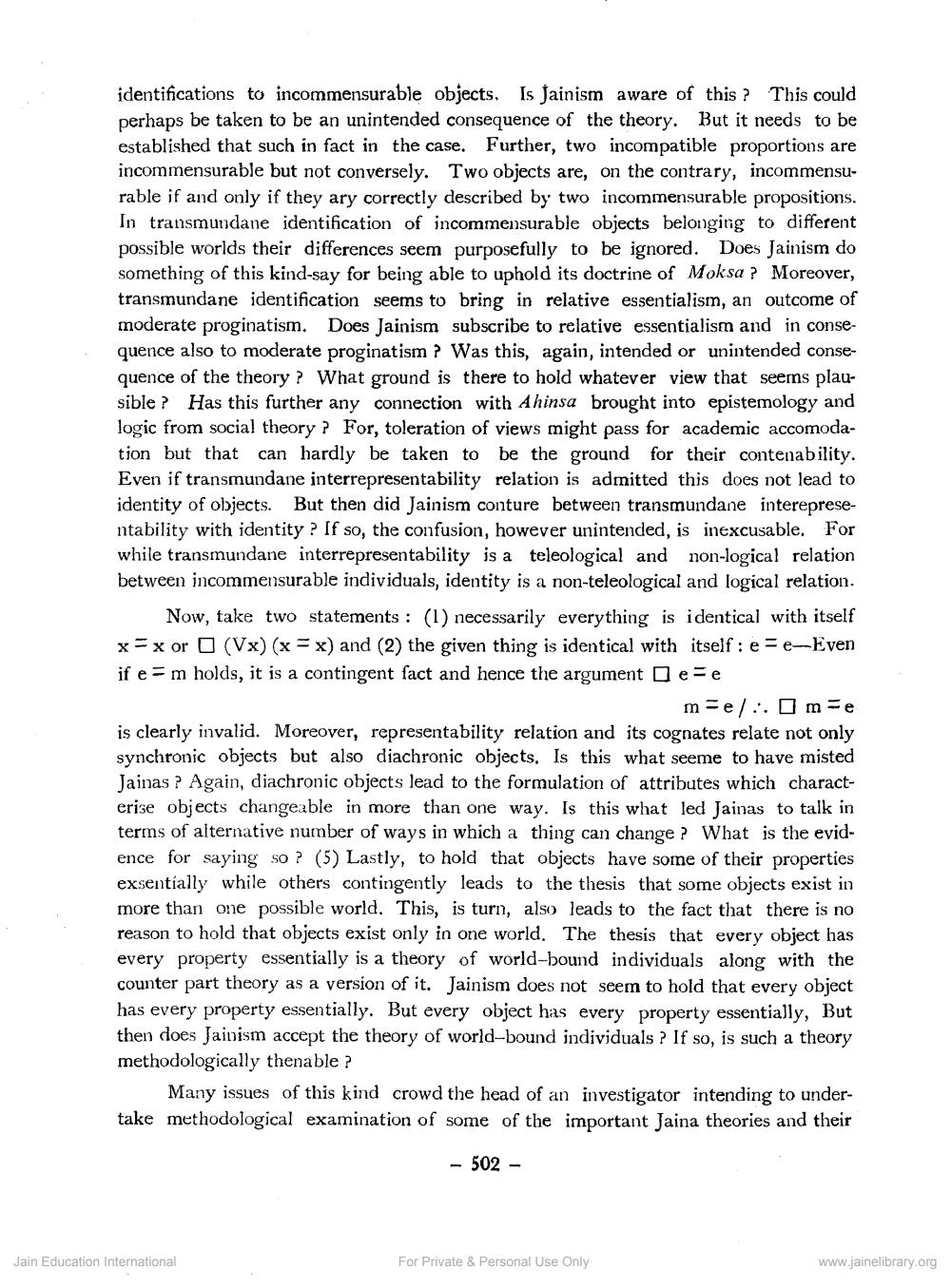Book Title: Jain Conception of Logic Some Comments Author(s): M P Marathe Publisher: Z_Kailashchandra_Shastri_Abhinandan_Granth_012048.pdf View full book textPage 5
________________ identifications to incommensurable objects. Is Jainism aware of this? This could perhaps be taken to be an unintended consequence of the theory. But it needs to be established that such in fact in the case. Further, two incompatible proportions are incommensurable but not conversely. Two objects are, on the contrary, incommensurable if and only if they ary correctly described by two incommensurable propositions. In transmundane identification of incommensurable objects belonging to different possible worlds their differences seem purposefully to be ignored. Does Jainism do something of this kind-say for being able to uphold its doctrine of Moksa? Moreover, transmundane identification seems to bring in relative essentialism, an outcome of moderate proginatism. Does Jainism subscribe to relative essentialism and in consequence also to moderate proginatism? Was this, again, intended or unintended consequence of the theory? What ground is there to hold whatever view that seems plauHas this further any connection with Ahinsa brought into epistemology and logic from social theory? For, toleration of views might pass for academic accomodation but that can hardly be taken to be the ground for their contenability. Even if transmundane interrepresentability relation is admitted this does not lead to identity of objects. But then did Jainism conture between transmundane interepresentability with identity? If so, the confusion, however unintended, is inexcusable. For while transmundane interrepresentability is a teleological and non-logical relation between incommensurable individuals, identity is a non-teleological and logical relation. Now, take two statements: (1) necessarily everything is identical with itself x=x or (Vx) (x = x) and (2) the given thing is identical with itself: e = e-Even if em holds, it is a contingent fact and hence the argumentee me/. Ome is clearly invalid. Moreover, representability relation and its cognates relate not only synchronic objects but also diachronic objects. Is this what seeme to have misted Jainas ? Again, diachronic objects lead to the formulation of attributes which charact erise objects changeable in more than one way. Is this what led Jainas to talk in terms of alternative number of ways in which a thing can change? What is the evidence for saying so? (5) Lastly, to hold that objects have some of their properties exsentially while others contingently leads to the thesis that some objects exist in more than one possible world. This, is turn, also leads to the fact that there is no reason to hold that objects exist only in one world. The thesis that every object has every property essentially is a theory of world-bound individuals along with the counter part theory as a version of it. Jainism does not seem to hold that every object has every property essentially. But every object has every property essentially, But then does Jainism accept the theory of world-bound individuals? If so, is such a theory methodologically thenable? Many issues of this kind crowd the head of an investigator intending to undertake methodological examination of some of the important Jaina theories and their Jain Education International - 502 - For Private & Personal Use Only www.jainelibrary.orgPage Navigation
1 ... 3 4 5 6
